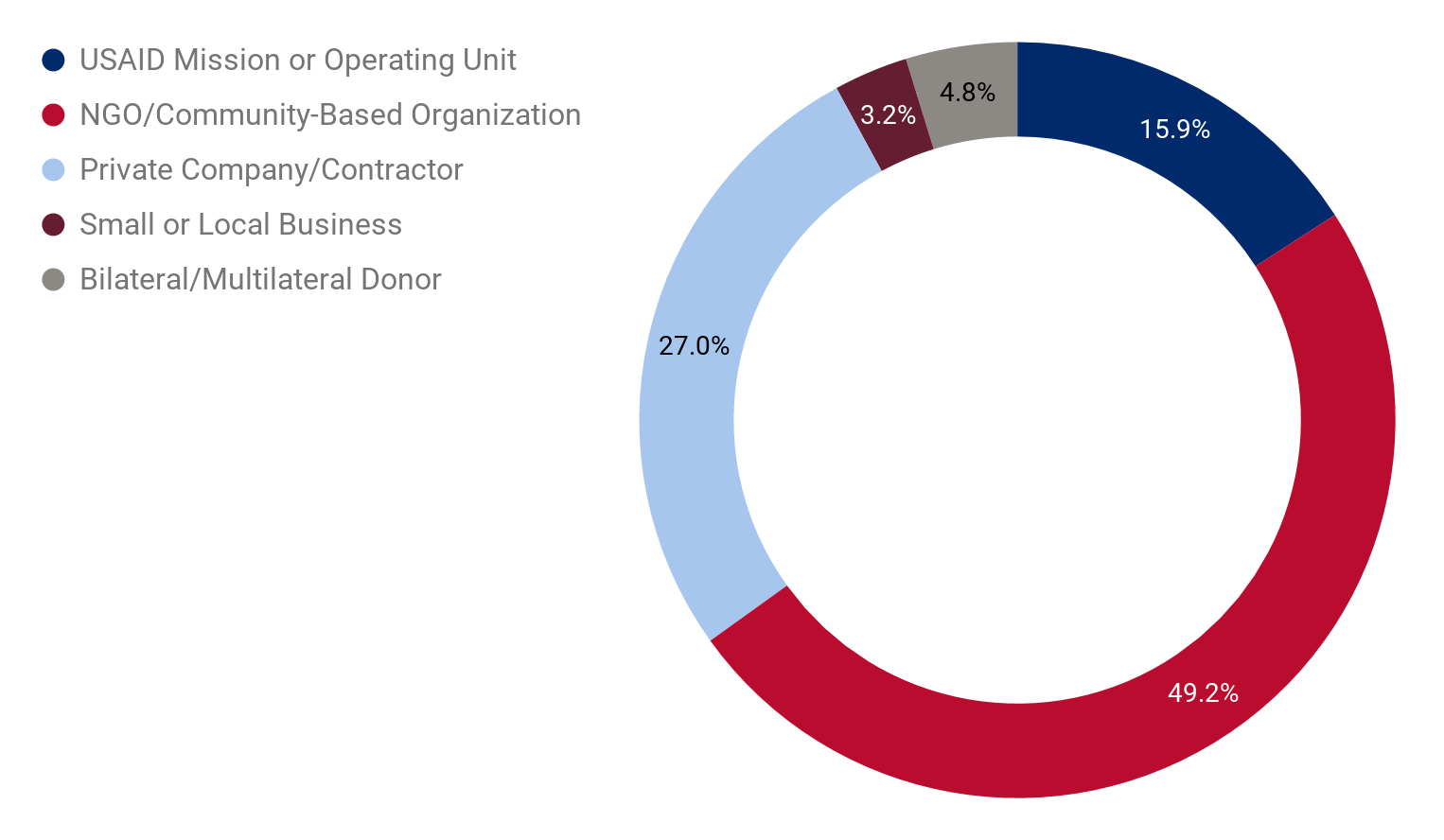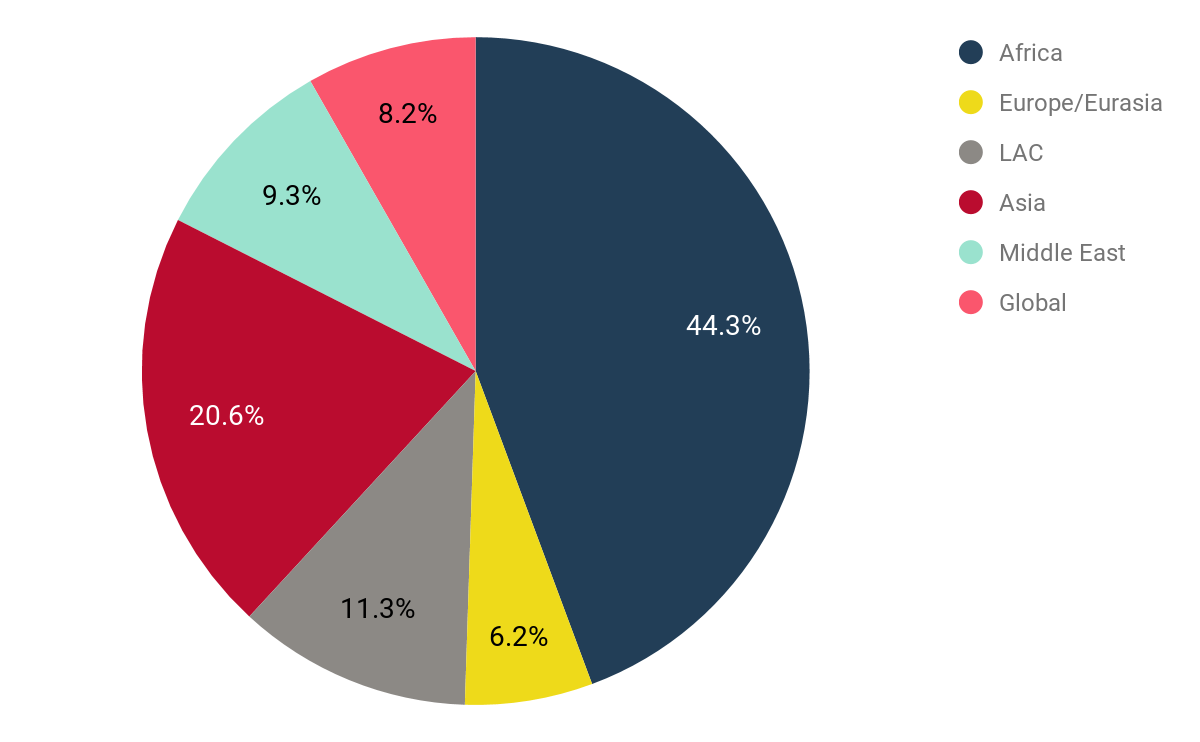The Winners of the 2019 Collaborating, Learning, and Adapting Case Competition are…
USAID’s Bureau for Policy, Planning and Learning and the LEARN contract are happy to sponsor the fifth-annual Collaborating, Learning and Adapting (CLA) Case Competition. The entry period was held March 4th - April 12, 2019 and this year, we received 97 case studies. Thank you, submitters!
The objectives of the CLA Case Competition are to:
- Capture real-life case studies of USAID staff and implementing partners using a CLA approach for organizational learning and better development outcomes;
- Identify enablers and barriers to CLA integration; and
- Contribute to the evidence base for CLA
In addition, the CLA Case Competition is an annual opportunity to check in on what’s happening with CLA integration throughout USAID’s programs. The increasing number of submissions over the past five years (57 in 2015, 63 in 2016, 100 in 2017, 127 in 2018, 97 in 2019) indicates that CLA practices (or, at least, awareness of the competition), is rising.
Here are some key takeaways from an analysis of this year’s cases:
- We added a new question to the submission form about whether the highlighted CLA approach(es) contribute to a country’s Journey to Self-Reliance. This question was not given a score when determining winners in the competition, but it has helped to shape the collective understanding about how CLA contributes to self-reliance. We’ll be publishing a blog with more information and great examples soon!
- In 2019, we continued to encourage USAID Missions/Operating Units and implementing partners to submit cases together. And you did! This year we received 19 cases from joint submitters.
This graphic shows the breakdown of the organizations that submitted cases this year.

- We continue to see a good concentration of CLA case examples from Africa, but we also received a number of cases from other regions, including Asia and Latin America and the Caribbean (LAC), as well as a number from the Middle East.

So, without further ado, here are the winners of the 2019 CLA Case Competition!
USAID/Honduras in partnership with Banyan Global submitted “Employing Futures - CLA to Strengthen Youth Workforce Development in Honduras,” which was a favorite amongst judges. The Empleando Futuros project in Honduras was designed to increase employment among targeted at-risk youth. A critical pause and reflect moment helped the project staff recognize the limitations of their initial training model and revisit their assumptions. Because CLA was included from the outset, the staff were able to adapt their programming to better meet the needs of their local partners and to build the capacity of local systems. As a result of the adaptation, Empleando Futuros has seen a decreased dropout rate for participants and reduced risk factors for youth entering the workforce. Congratulations to authors Olvan Lopez, Tanya Hurst, and Ana Rubi!
“The Luke Commission (TLC) uses CLA to Manage Rapid Growth in Eswatini,” is a clear example of a local organization focusing on the enabling conditions needed to preserve its organizational culture and enhance development results. TLC is a local, faith-based NGO based in Eswatini (formerly Swaziland) that provides comprehensive, integrated medical care to under-served populations at a central facility and through mobile hospitals. During a period of enormous organizational growth--including doubling their staff in twelve months--TLC was concerned about maintaining its organizational culture, which focused on providing quality and compassionate care to clients. The team worked to intentionally address the mental and emotional trauma of HIV and poverty among their own staff and utilized pause and reflect opportunities and a systemic approach to institutional memory as they expanded their services and increased the number of rural patients treated in Eswatini. Congratulations to author Echo VanderWal!
In Save the Children’s case, “Promoting Sustainability & Self-Reliance: Use of Group Capacity Assessment Data in Nepal,” the Sabal program, funded by the USAID Office of Food for Peace, used CLA approaches to support its work on improving food security and resilience and building the self-reliance of community groups. Prompted to adapt by changes in the context and in the program’s budget, Sabal staff used monitoring and other data to develop tailored interventions for local community groups. More mature organizations, for example, were assisted in registering with the local government and were linked with local resources and leaders. These collaborations were a success--during 2018, forty-one municipalities allocated over $9 million of their own budgets to support Sabal-promoted activities and technologies. Congratulations to authors S. Sharma, N. Ranaivoarivelo, K. Arnold, and T. Dhungana!
Chemonics submitted “Strengthening Colombia’s Social Service Workforce through Collaboration and Learning,” featuring the USAID Human Resources for Health 2030 (HRH2030) Program in Colombia. HRH2030 used CLA approaches in its work with the Colombian Family Welfare Institute (ICBF) to provide violence prevention and protection services to children and families. HRH2030 staff worked collaboratively with ICBF in designing interventions based on technical evidence. This resulted in stronger relationships between the HRH2030 and ICBF, enabling them to strengthen organizational processes and fine-tune case management approaches, so that the ICBF can realize greater capacity and better outcomes for Colombian children, adolescents, and families. Congratulations to authors J. Barco, H. Maje, M. Contreras, K. Gorentz!
In CARE’s case, “Failing Forward: How CARE is focusing on what goes wrong to improve impact”, the author describes an organization-wide initiative to showcase ideas that didn’t work in order to spend more time implementing ideas that do! Failing Forward combines a number of light-touch approaches, like podcasts, coffee conversations, and social media posts, with other, broader efforts like documenting failures, instituting pre-mortems and revamping Monitoring, Evaluation and Learning training materials. These intentional and systematic opportunities to pause and reflect on past experiences offer learning opportunities for others within the organization. While it is too early to see a direct development impact from this initiative, the expectation is that projects will get more efficient and deliver better results faster because they are able to apply lessons from elsewhere and adapt to challenges faster. Congratulations to author Emily Janoch; this is the fourth time CARE has submitted a winning case!
KHPT, a nonprofit organization in Southern India, submitted a case titled “Using CLA towards an innovative approach to preventing diagnostic delay for TB patients,” which highlights how regular knowledge sharing and learning from monitoring data can improve program outcomes and support self-reliance. In this case, KHPT was working to reduce the risk of tuberculosis (TB) transmission by speeding up diagnosis, which could take months in areas without diagnostic facilities. The program worked with local government to develop a collection and transportation system for TB tests. Field agents were empowered to solve the implementation challenges they faced, and to share and learn from others, through a WhatsApp group and more formal pause and reflect opportunities. As a result, within the first nine months of activity implementation, thousands of patients received TB diagnoses and could begin treatment. Congratulations to author Vrinda Manocha!
USAID’s Bureau for Latin America and the Caribbean (LAC) wrote a case highlighting a regional peer network for Mission-based Monitoring, Evaluation, and Learning (MEL) Specialists. Their case, “LAC MEL Specialists Use Peer Network to Improve Quality and Use of Evidence” showcases the LAC MEL Peer Network, which was developed to promote knowledge sharing around MEL approaches and tools for field-based staff. The network empowers MEL specialists in the region and expects to contribute to improved quality and use of evidence for programs in LAC. Congratulations to authors Todd Anderson and Amy Prevatt!
USAID/Cambodia is recognized for ingenuity for their case, “CLA in USAID/Cambodia Site Visit Reporting and Utilization,” which describes taking the otherwise routine process of writing site visit reports and making them a useful learning experience for Mission staff. Their goal in updating the site visit planning and reporting process was grounded in CLA concepts such as strategic collaboration, continuous learning and improvement, and adaptive management. The team’s aim was to strengthen how the Mission plans, documents, and analyzes site visits. The new site visit reporting approach has contributed to more comprehensive and systematic data collection about the Mission’s activities and better evidence and knowledge about the performance of the Mission’s portfolio. Congratulations to authors Peoulida Ros, Sopheak Hoeun, and Carlos Lamadrid!
The USAID Regional Health Integration to Enhance Services in Eastern Uganda (RHITES-E) activity, implemented by IntraHealth International, supports the government of Uganda to expand access to high quality health services. Their case, “How collaborative efforts led to better HIV services and outcomes in Eastern Uganda,” highlights their use of strategic collaboration across multiple stakeholder groups to increase HIV testing and care and treatment for those who test positive. RHITES-E developed a dashboard and used performance data to learn which approaches were working and to adapt accordingly. As a result, the program was able to build the capacity of local organizations to test and treat more patients in Eastern Uganda. Congratulations to author Carol Karutu!
In Kenya, RTI’s K-YES project highlighted their use of CLA to strengthen the capacity of Technical and Vocational Education and Training (TVET) institutions. “Strengthening Kenya's TVET capacity through learning and adaptation” describes how program staff worked collaboratively with an initial cohort of partner TVET institutions to assess their strengths and challenges and develop a monitoring and evaluation system to be responsive to organizational changes. The learning from these efforts was applied to work with additional institutions in future phases. K-YES has observed significant outcomes as a result, including an improvement of TVET institutions’ performance scores by an average of 39%. Congratulations to authors Ehud Gachugu and Sarah Mattingly!
These winning cases will be featured here on USAID Learning Lab in the coming months, and ultimately become a part of the CLA case database--providing inspiration and direction to USAID staff and partners interested in achieving better organizational and development outcomes.
Choosing just ten winners from 97 submissions was challenging, especially because the cases get stronger each year. The judges’ consolation is that we also recognize an additional 10 cases as finalists. Click here to see the finalists from this year, as well as cases from previous years. The rest of the top 75% of cases submitted this year will also be posted to this CLA Case Study collection in the coming months. Congratulations once more to our winners!



